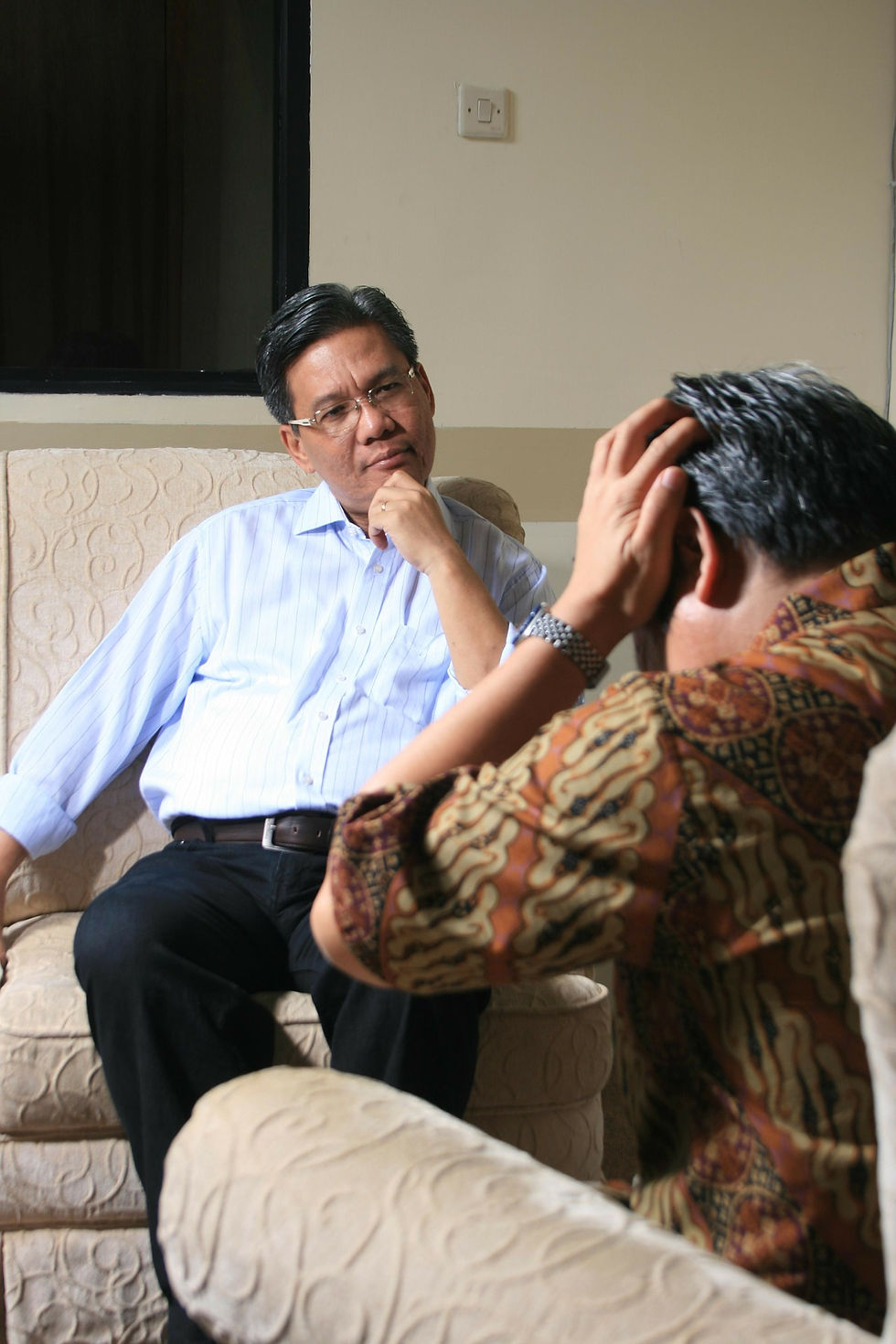How Does Psychotherapy Work?
- Tim Hoffman
- Sep 12, 2017
- 3 min read
Updated: Nov 12, 2024

For anyone unfamiliar with psychotherapy or counselling (they’re the same thing, and so I use the terms interchangeably), it’s a pretty strange concept: That sitting in a room with a stranger and talking once or twice a week for a couple of weeks, months or even years can make a person feel better.
It’s easy to understand how going to a doctor makes you feel better: you get some medicine, take it, and whatever active ingredient is in that medicine fixes whatever was making you feel bad. When you see a psychotherapist, what is the active ingredient that makes you feel better? What’s the equivalent of the medicine that the doctor gives you?
For the last hundred or so years — ever since psychotherapy was invented — psychologists have been trying to answer that question. There are over 400 different schools of therapy, each with its own ‘active ingredient’. Which one works best? Which ‘active ingredient’ holds the key to making you feel better?
The answer is: All of them. No form of therapy has been conclusively proved to be better than any other. This is the Dodo Bird Verdict, named after the character in Alice in Wonderland who organizes a race and when asked who won, replies “Everybody has won and all must have prizes.”
Unless you’re a psychotherapist who has invested lots of time and money in becoming an expert at one or more of these therapies, this probably elicits nothing but a big yawn. (If you ARE one of those psychotherapists, you’re probably going to stop reading this article because it’s not pleasant thinking that you may have wasted your time and money.) Bear with me for another few paragraphs.
Many of these 400 different therapies have very different theories about people, and their treatments are entirely different. A cognitive therapist will help you change your thinking about your problem, a behaviorist will get you to change your behavior, a psychoanalyst will delve into your childhood conflicts and a solution focused therapist will get you to talk about what your life will look like when your problems go away. Why would such different treatments all work about equally well?
If you don’t see how odd this is, imagine you went to see three doctors because your back hurt. The first says your qi is blocked and prescribes acupuncture. You decide to get a second opinion, and that doctor second says your core muscles are weak and prescribes physiotherapy. And the third diagnoses a spinal tumor and insists on surgery. Would you expect all three treatments to work equally well? Of course not!
So why do therapies that have different theories about the way people function, and different treatments to change that function, all work equally well? The answer is that there are things going on in a therapy room that are similar regardless of what type of therapy is being used. These things are called “common factors” because they’re common across all kinds of therapy — and these are the factors that make therapy work.
What are these common factors? The most well known and well proven is the therapeutic alliance — in other words, a strong relationship, marked by caring and empathy, between the client and the therapist. Other factors include the ability of the therapist to instill hope in the client; the degree of trust that the client has in the capability and professionalism of the therapist, and the therapist’s model that explains the client’s problems along with a procedure for fixing them. In addition, some research indicates that a corrective emotional experience can be helpful. (That might mean, for example, that your therapist doesn’t treat you the way your mother did.)
Human beings have a remarkable ability to fix themselves. Often, with no outside help, we stop drinking, repair relationships, overcome depression, cope with anxiety or recover from loss. But sometimes we get stuck. and we can’t fix ourselves on our own. Sitting across the room from a caring, interested, accepting and understanding individual whose job is to help you as you fix yourself — well, that can make all the difference.
























Comments